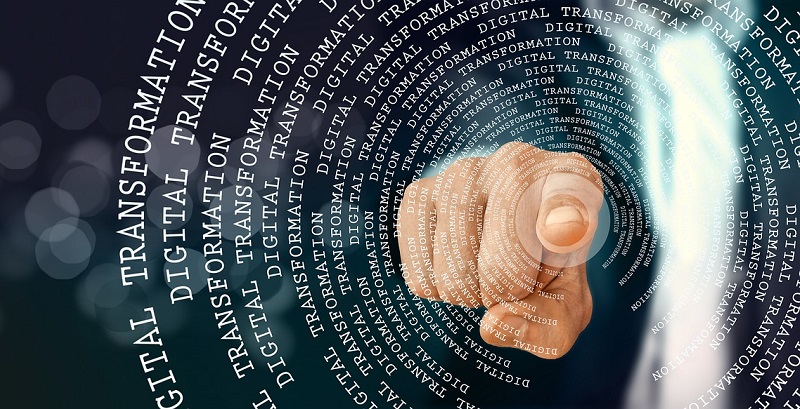In the realm of business, where agility and innovation are essential currencies, the shift towards digital transformation is no longer a mere trend—it’s an imperative. As organizations effectively harness the power of modern technology, they gain a competitive edge, driving growth and success in a rapidly changing landscape. However, this transition brings with it a new set of challenges, particularly in the realm of cybersecurity. In this article, we delve into the importance of creating a secure digital environment, implementing a zero-trust model, understanding data sovereignty laws, leveraging immutable backups, creating a decentralized ledger, investing in trained personnel, and embracing a multifaceted approach for a future where innovation thrives and adversaries find no quarter.
Importance of a Secure Digital Environment
When teams feel secure in their digital environment, they are more inclined to experiment, collaborate, and drive the business forward. Confidence in the security measures in place fosters a culture of innovation, enabling employees to explore new ideas and take calculated risks. By implementing comprehensive security protocols and ensuring the confidentiality, integrity, and availability of critical assets, organizations can create a nurturing environment that empowers their workforce.
Real-Time Threat Intelligence
With cyber adversaries employing sophisticated attack methodologies, real-time threat intelligence is critical. By continuously monitoring and analyzing network activity, organizations can identify and mitigate potential threats before they cause extensive damage. Automated systems, leveraging artificial intelligence and machine learning algorithms, provide valuable insights and allow for proactive response strategies, minimizing the impact of cyber attacks in a rapidly evolving digital landscape.
Implementing a Zero-Trust Model
In the face of ever-evolving cyber threats, organizations need to adopt a proactive approach. Implementing a zero-trust model—where every access request is fully authenticated, authorized, and encrypted before access—adds a formidable layer of protection. This model assumes that no device, user, or application within or outside the corporate network can be trusted implicitly. By continuously assessing the context of access requests, organizations can enforce granular and dynamic security policies, effectively mitigating the risks associated with unauthorized access attempts.
Understanding Data Sovereignty Laws
As data sprawls across global cloud infrastructures, understanding data sovereignty laws becomes vital. Organizations must meticulously analyze legal, regulatory, and contractual obligations governing the storage, transfer, and processing of data in different jurisdictions. Adhering to these laws ensures compliance and preserves customer trust, mitigating the risk of potential penalties and reputation damage.
The Power of Immutable Backups
Beyond just hosting files, consider the power of immutable backups—where data, once written, cannot be modified or deleted for a specified period. Immutable backups provide an added layer of protection against ransomware attacks and accidental or malicious data tampering. By preserving the historical integrity of data, organizations can recover quickly and reliably in the event of an incident, minimizing downtime and ensuring business continuity.
Creating a decentralized ledger for data integrity allows for unparalleled data integrity and verifiability of hosted files. Distributed ledger technology, such as blockchain, provides a transparent and tamper-proof record of file access events. This approach enhances trust, transparency, and enables organizations to provide auditable proof of compliance with data protection regulations. It establishes a strong foundation for building customer confidence.
Importance of Trained Personnel
Tools and technologies are only as good as the people behind them. Continuous training, simulations, and awareness campaigns ensure that the human element of your organization remains a strength, not a vulnerability. By providing employees with the necessary knowledge and skills to recognize and respond to cyber threats effectively, organizations can build a resilient workforce capable of mitigating risks and safeguarding critical assets.
Continuous Training and Awareness
Cybersecurity is a dynamic field where threats constantly evolve. Regular training sessions and simulations keep employees up to date with the latest attack vectors and defense strategies. Furthermore, awareness campaigns help cultivate a cybersecurity-conscious culture, where employees are encouraged to report suspicious activities promptly. Through ongoing education and engagement, organizations build a proactive defense against emerging threats and empower their employees to become allies in the fight against cybercrime.
Embracing a Multifaceted Approach
By embracing this multifaceted approach, organizations position themselves not merely as participants in the digital age, but as pioneers – charting the course for a future where innovation thrives, customers trust, and adversaries find no quarter. By prioritizing security, leveraging advanced technologies, adhering to data regulations, investing in trained personnel, and fostering a culture of innovation, organizations can navigate the digital landscape confidently, unlocking limitless potential for growth and success.
Digital transformation offers immense possibilities for businesses to elevate their performance, but it also introduces new risks and challenges. By implementing robust security measures, understanding data regulations, leveraging advanced technologies, investing in trained personnel, and embracing a multifaceted approach, organizations can fortify their operations and drive innovation securely in the digital age. By doing so, they can position themselves at the forefront of their industries, confidently charting a course towards a future where success is fueled by agility, resilience, and the ability to adapt to an ever-changing landscape.

